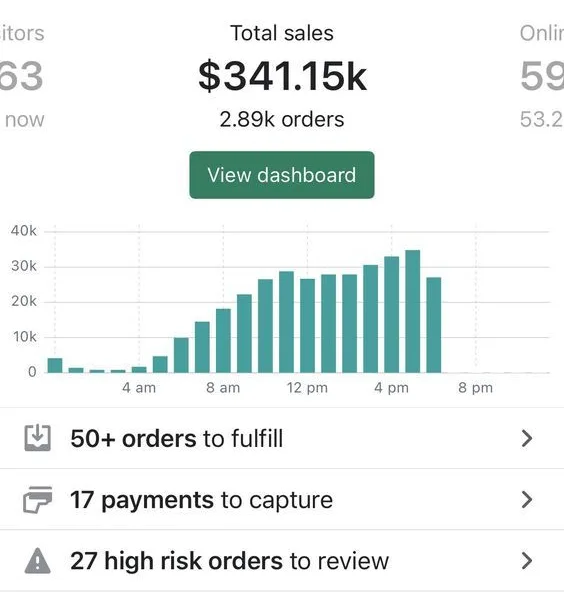How to start Dropshipping: All you need to know.
How to start Dropshipping:
Understanding Dropshipping: The Basics:
Dropshipping has emerged as a popular business model in the age of e-commerce, offering entrepreneurs a low-risk entry into the world of online retail. In essence, dropshipping allows sellers to market and sell products without holding any physical inventory. Instead, when a customer makes a purchase, the seller purchases the item from a third-party supplier who then ships it directly to the customer. This model eliminates the need for warehousing, inventory management, and upfront investment in stock, making it an attractive option for aspiring entrepreneurs.
At its core, dropshipping operates on a simple premise: find products to sell, set up an online store, market those products to potential customers, and fulfill orders by partnering with suppliers who handle shipping and inventory management. Let’s delve deeper into the key components of dropshipping:
- Finding Products: Successful dropshipping starts with finding the right products to sell. This involves conducting market research to identify trending or niche products with high demand but low competition. Tools like Google Trends, Amazon Best Sellers, and social media platforms can provide valuable insights into consumer preferences and buying patterns. Additionally, consider factors such as product cost, shipping times, and supplier reliability when selecting products for your store.
- Setting Up an Online Store: Once you’ve chosen your products, it’s time to set up your online store. Platforms like Shopify, WooCommerce, and BigCommerce make it easy for entrepreneurs to create professional-looking websites without any coding knowledge. Customize your store’s design, layout, and branding to create a unique and engaging shopping experience for your customers. Ensure that your store is user-friendly, mobile-responsive, and optimized for search engines to maximize visibility and conversions.
- Supplier Selection: The success of your dropshipping business hinges on your relationship with suppliers. Look for reliable and reputable suppliers who offer quality products, competitive prices, and efficient shipping times. Popular dropshipping suppliers include AliExpress, Oberlo, and SaleHoo, but you can also source products directly from manufacturers or wholesalers. Communicate clearly with your suppliers, establish payment terms, and negotiate favorable pricing and shipping arrangements to ensure smooth order fulfillment.
- Marketing and Promotion: With your store set up and products sourced, it’s time to attract customers and drive sales. Develop a comprehensive marketing strategy that leverages a mix of channels such as social media, search engine optimization (SEO), email marketing, influencer partnerships, and paid advertising. Create compelling content, promotions, and discounts to incentivize purchases and encourage repeat business. Monitor your marketing efforts closely, track key metrics, and adjust your strategy based on performance data to optimize results.
- Order Fulfillment and Customer Service: As orders start rolling in, it’s crucial to ensure seamless order fulfillment and provide exceptional customer service. Streamline the order processing workflow by integrating your online store with your supplier’s systems for automated order placement and shipment tracking. Keep customers informed about their order status, shipping updates, and any potential delays to manage expectations and prevent dissatisfaction. Promptly address customer inquiries, resolve issues, and strive to deliver a positive shopping experience to build trust and loyalty.
- Monitoring Performance and Adaptation: Finally, continuously monitor the performance of your dropshipping business and adapt your strategies accordingly. Track key performance indicators (KPIs) such as sales revenue, conversion rate, average order value, and customer acquisition cost to gauge the effectiveness of your efforts. Identify areas for improvement, experiment with new tactics, and iterate on your marketing, product selection, and customer service to stay competitive and sustain growth in the ever-evolving e-commerce landscape.
Step-by-Step Guide to Starting Your Own Dropshipping Business:
Starting your own dropshipping business can be an exciting event, offering flexibility and low start-up costs. This step-by-step guide will walk you through the process of launching your own dropshipping business, from selecting a niche to marketing your products.
1. Research and Select a Niche Begin by researching various niches to identify products with high demand and low competition. Consider factors such as profitability, target audience, and product uniqueness. Use tools like Google Trends, Amazon Best Sellers, and social media platforms to gather insights.
2. Conduct Competitor Analysis Study your competitors to understand their pricing strategies, product offerings, and marketing tactics. Identify gaps in the market that you can capitalize on and differentiate yourself from competitors.
3. Choose a Reliable Dropshipping Supplier Selecting the right dropshipping supplier is crucial for the success of your business. Look for suppliers with a good track record, fast shipping times, quality products, and excellent customer service. Popular dropshipping platforms like Oberlo, AliExpress, and SaleHoo can help you connect with reputable suppliers.
4. Set Up Your Online Store Choose an e-commerce platform like Shopify, WooCommerce, or BigCommerce to create your online store. Customize your store’s design, layout, and branding to reflect your niche and attract your target audience. Ensure that your store is user-friendly and optimized for mobile devices.
5. Add Products to Your Store Import products from your chosen dropshipping supplier to your online store. Write compelling product descriptions and optimize your product listings for search engines to improve visibility. Use high-quality images and videos to showcase your products effectively.
6. Establish Pricing and Profit Margins Determine your pricing strategy based on factors such as product cost, shipping fees, and desired profit margins. Consider offering competitive prices to attract customers while ensuring profitability for your business.
7. Set Up Payment Gateway Integrate a secure payment gateway into your online store to accept payments from customers. Popular payment gateways include PayPal, Stripe, and Square. Ensure that your payment process is smooth and hassle-free to provide a positive shopping experience for customers.
8. Implement Marketing Strategies Develop a comprehensive marketing plan to drive traffic to your online store and generate sales. Utilize a mix of digital marketing channels such as social media marketing, search engine optimization (SEO), email marketing, and influencer partnerships to reach your target audience.
9. Optimize for Search Engines Optimize your website for search engines to improve its visibility and attract organic traffic. Conduct keyword research to identify relevant search terms and incorporate them into your website’s content, meta tags, and product descriptions. Regularly update your website with fresh, high-quality content to improve its search engine rankings.
10. Provide Excellent Customer Service Deliver exceptional customer service to build trust and loyalty with your customers. Respond promptly to customer inquiries and address any issues or concerns in a timely manner. Offer flexible return and refund policies to enhance the shopping experience for your customers.
11. Analyze and Iterate Monitor the performance of your dropshipping business regularly and analyze key metrics such as sales, traffic, and conversion rates. Identify areas for improvement and make necessary adjustments to your strategies and tactics. Continuously iterate and refine your business processes to stay competitive in the market.
12. Scale Your Business Once you have established a profitable dropshipping business, explore opportunities to scale and grow further. Consider expanding your product offerings, entering new markets, or implementing additional marketing strategies to increase sales and revenue. Continuously seek ways to innovate and adapt to changing market dynamics to sustain long-term success.
Top Platforms for Running a Successful Dropshipping Store:
Running a successful dropshipping store requires more than just finding products to sell; it demands choosing the right platform to showcase those products effectively. In the rapidly evolving world of e-commerce, several platforms stand out as optimal choices for entrepreneurs venturing into dropshipping. Let’s delve into the top platforms for running a thriving dropshipping store.
- Shopify: Shopify stands tall as one of the premier platforms for dropshipping. Its user-friendly interface, extensive app ecosystem, and robust features make it an ideal choice for both novice and experienced entrepreneurs. With Shopify, you can effortlessly set up your store, customize its appearance, and integrate various apps to enhance functionality.
Key features:
- Seamless integration with Oberlo, a leading dropshipping app, simplifying product sourcing and order fulfillment.
- Abundance of customizable themes to give your store a unique look.
- Comprehensive analytics and reporting tools to track sales and performance.
- Built-in marketing tools such as email marketing and social media integration to reach and engage customers.

Shopify’s scalability allows businesses to grow without worrying about technical constraints, making it a top choice for aspiring dropshippers.
- WooCommerce (WordPress): For those who prefer a more customizable and scalable solution, WooCommerce, a WordPress plugin, is an excellent option. While it requires a bit more technical know-how compared to Shopify, WooCommerce offers unparalleled flexibility and control over your online store.
Key features:
- Seamless integration with WordPress, giving you access to thousands of plugins and themes to tailor your store to your specific needs.
- Full control over your store’s design, functionality, and data.
- Extensive range of payment gateway options, allowing you to cater to customers worldwide.
- Ability to leverage content marketing through WordPress’s blogging capabilities, driving traffic and boosting SEO.
WooCommerce’s open-source nature and extensive community support make it an attractive choice for entrepreneurs looking to create a truly unique dropshipping experience.
- BigCommerce: BigCommerce is another powerful platform tailored for ambitious dropshippers. With its robust features and scalability, BigCommerce empowers businesses of all sizes to build and grow their online presence.
Key features:
- Built-in dropshipping functionality, enabling seamless integration with popular dropshipping suppliers.
- Advanced SEO tools to improve your store’s visibility and attract more organic traffic.
- Responsive themes optimized for mobile devices, ensuring a seamless shopping experience across all devices.
- Omnichannel capabilities, allowing you to sell across various online marketplaces and social media platforms.
BigCommerce’s focus on performance, security, and scalability makes it a reliable choice for businesses aiming to achieve long-term success in the dropshipping industry.
- Magento: Magento, an open-source e-commerce platform, offers unparalleled flexibility and scalability for dropshipping businesses. While it requires more technical expertise compared to other platforms, Magento provides extensive customization options and robust features to meet the unique needs of your store.
Key features:
- Modular architecture, allowing you to customize and extend your store’s functionality with ease.
- Multi-store capabilities, enabling you to manage multiple stores from a single admin panel.
- Strong community support and a vast ecosystem of extensions and integrations.
- Advanced features for inventory management, order fulfillment, and customer segmentation.
While Magento may require more upfront investment in terms of development and maintenance, its flexibility and scalability make it a compelling choice for ambitious dropshipping entrepreneurs.
- Dropified: Dropified is not a standalone platform but rather a powerful dropshipping automation tool that integrates seamlessly with e-commerce platforms like Shopify, WooCommerce, and others. It streamlines the dropshipping process, from product sourcing to order fulfillment, allowing you to focus on growing your business.
Key features:
- One-click product import from various suppliers and marketplaces.
- Automated order processing and tracking to streamline operations.
- Built-in product customization and pricing automation tools.
- Extensive training resources and customer support to help you maximize your dropshipping success.
Dropified’s automation capabilities save time and effort, making it a valuable asset for dropshippers looking to scale their operations efficiently.
Thank you for reading our blog, hope you got to know how to start dropshipping.
Hope you all enjoyed the blog, for update in bengali, Visit: https://taazakhobor.in/
More read:
https://deepblogs.net/dark-web-what-is-it-99-99-people-dont-know/
https://deepblogs.net/sunny-leone-biography/
Pakistani horrible murder case
How to prepare for Neet Exam from class 9. Score Guaranteed 701+ score!!!
How to make money by typing at home. Earn 1000-2000 rupees/day just by typing!!!
How to start a gaming channel on Youtube. Because gamers are the next billionaires.
How to earn money by blogging in 2024? Must Read to Earn Lakhs Of Money.








